|
Today, I am honored to host Historian Steven T. Dunn. He is host and webmaster of Fjorn’s Hall, a spectacular online resource and treasure trove for Norse research. It’s organized and easy to navigate. The information is abundant and understandable. Mr. Dunn not only shares his vast knowledge, he also points us to still further resources. Steven, many thanks to you for your benevolence and for taking time out of your packed schedule for this interview. Welcome! I have so many questions! Vikings have been a source of fascination almost forever. What initially drew you to Norse and Celtic history? Please tell us a little about your education and studies. First of all, many thanks for having me! It’s an honor to be a guest in your hall. Strangely enough, I ended up studying Norse and Celtic history on a whim, seemingly. I was picking my classes for the Spring 2015 semester when I saw a course called ‘Viking History.’ All I thought at the time, however, was: Oh, I don’t know anything about that. Why not take it? That class was phenomenal, not only because of the passionate instructor (Dr. Jennifer Knight) , but also because it showed the complexity of Norse culture in a way that I never even considered before. It certainly wasn’t only a culture of brawn and braided beards. What really drew me in, though, was when we read The Saga of King Hrolf Kraki (or Beowulf, but I choose Hrolf). After reading that, I wanted to know more about their stories and why they told them, so it wasn’t long before I was taking independent studies with Dr. Knight to learn more. During those studies, we read saga literature (especially Njal’s Saga, but also a collection of Irish sagas) alongside academic work seeking to unravel them. I continued to pursue those studies, mostly independently, through my Master’s program, which culminated in a thesis about cheese and clothing (and their surprising significance) in medieval Icelandic literature (which you can read here). You've been to Iceland! That must have been an amazing experience. Please share a few impressions with us. Stunning and scrumptious! While it might be cliché, my fondest memories are of the breathtaking scenery (I even painted some of it) and the delicious seafood (especially at Tjörhúsið, which served fish fresh off the fjord). I’ve lived most of my life in the horrendous, flat swampland known as Florida, so you can imagine the impression fjords and arctic winds had on me (delight, not dread). Back in the summer of 2018, I stayed in the small town of Ísafjörður in the Westfjords to study Icelandic for three weeks. It was far sunnier there than in Reykjavík (which was dreary beneath a drizzle most of the time), and I spent much of my free time wandering. My favorite place to wander was on the mountainside overlooking the fjord from the west; and the view I had was best captured by this picture, I think. Yet, I’d be a poor excuse for a scholar of saga literature if I failed to mention that I also got to visit a site from Gisli’s Saga! It was, of course, nothing but an ‘empty’ fjord. A farm was there, but certainly not the farm that once lay there in the medieval period. Nothing of that remained, but still the aura of that place was steeped with the history and legend that once was. I won’t forget it anytime soon, nor the sheep I nearly befriended there. A truly spectacular trip! These photos are gorgeous. Have your feelings about the Norse changed over the years? What have you learned that’s surprised or amazed you? Indeed they have. At first I was captivated by that (very modern) ‘Viking’ aesthetic: fearless, axe-wielding heathens who went off ‘adventuring’ where few others would. Since then, however, I’ve actually come to loath that image of the Norse because it’s such a sliver of what they were actually like. So many of them were peaceful, enjoying their crafts and storytelling far more than plundering and fighting. The idea that all Norse dreamed of going to Valhalla by dying a warrior’s death was, after all, a dream mostly for the aristocratic. I now find myself more enamored by the men and women who shared their stories by the hearth while the winds of winter kept them indoors. It’s their worldview that I now admire, for they dealt with fickle land-spirits, feuds born from love triangles or grave misunderstandings, and many more relatable human experiences. I suppose one thing that’s surprised me the most is just how much a person can learn about a culture when they look more closely at the ‘mundane’ parts of it, rather than the flashy bits. Norse mythology and Viking raids get all the attention, but the depth of life you can glean from their stories about farmers is far more fascinating (and amazing). I’m still taken aback whenever I consider how much social and cultural meaning is contained within a single piece of cheese in Njal’s Saga. It may sound strange, but that cheese embodies so much. Women were in charge of making dairy products, so when a woman steals cheese from a neighbor who not only refused to help them during a famine (even though they were capable of doing so) but also insulted her husband (who refused to retaliate properly by taking the food by force), it says so much about what women were capable of doing even within their domestic domain. This saga was warning men that women could find ways to feud like men with cheese, because that was an object that they had authority over. Sword and axes may be more interesting, but women learned to weaponize clothing and food when feuding with neighbors and lovers—and that is far more fascinating (even if it is a bit obscure). It’s all fascinating, and I couldn’t agree more that we can glean a more complete picture of a culture from the mundane aspect of day to day living rather than the glorified parts. You know I love your website. It is an amazing, astonishingly generous, thorough resource. I thought it was amazing years ago, when you first began. But “The Hall” has changed and grown in every direction! How did it all come about? The Hall actually began as a Pinterest-turned-Tumblr blog called The Viking Life. That blog’s ‘birthday’ was September 29th, 2015; and it was five years later on that very day (Sept. 29th, 2020) when I launched the new website that it has since become. Back then, however, it was simply a place to share small bits of information on the Vikings and reblog posts or pictures that formed a pleasant aesthetic. Yet, by March 2016, I was starting to write more substantial blogposts that collectively formed informal crash courses covering Viking History. I made it as far as lesson 27 (a total of 45 posts) before starting graduate school and losing time to write them. I nevertheless persisted, trying various new things (albeit sporadically) while working on my studies. Among them was starting a podcast (in July of 2018), as well as a Norse-themed tea shop called The Northern Herbalist (in March 2019). Both of those projects ended up faltering as my focus shifted to other things, though, such as creating the Hall that stands today: an affordable (and accessible) place to learn Norse and Viking history from a reliable, high-quality source. In order to pursue that goal more professionally, I started writing lessons again, but also providing videos, podcasts, ‘databases,’ and digital maps for people to use alongside them. As a result, the Hall has become an online ‘school’ of sorts, but more casual (being free from academic jargon and unnecessary pressures, such as deadlines and mandatory assignments). People from around the world can access the Hall’s hoard of wisdom without having to apply to a University, move vast distances to attend them, or accumulate debt to cover their tuition. Instead, they just need an internet connection and be willing to pay a modest subscription of either $5 or $10 a month (thus becoming a Companion of the Hall). Considering the alternatives, it’s not a bad deal! But I suppose I’m a pretty biased source. It's a great deal and not just a great deal; it's a gift! I can't say enough in praise of this amazing resource, this space for knowledge and learning that you've created. I can’t decide on my favorite page, either – the raids, the resources, there are so many wonderful opportunities to discover and learn. Is there an area of the Hall that is more work than the others? What are you concentrating on now? Is there a part of your website that you are extra-proud of? My favorite page, and the one that involves the most work, is definitely the one for Raids. They are, after all, the heart of the Hall. Each Raid is a short ‘course’ containing concise lessons and videos that get right to the point. So instead of enduring long courses with deadlines, time limits, and mandatory assignments, people can raid our material whenever and however it suits them. It’s a more casual approach to online learning, and perhaps a bit less ‘prestigious’ as a result, but it’s better than boring people to death or overwhelming them with rigorous schedules and assignments. But with them being so short and casual, I believe they become more accessible. Most of us are, after all, swamped with a long list of things vying for our attention. The reason these Raids are so much work, however, is because they accommodate various modes of learning. Rather than forcing people to sit through lectures, I offer both written lessons and lectures. While this doubles my work, it nevertheless provides people with multiple options and therefore increases accessibility. People who need to read in order to learn may do so without having to watch a single video, while those who learn best by watching or listening to videos may do so without ever having to read a lesson. And once they finish a Raid, they can choose whether or not they’d like to take the quiz or test that I provide. Admittedly, these Raids are slow to develop. I’m only one historian, after all. Yet with support and time, these Raids will add up and collectively produce Campaigns, which are what the Hall considers to be ‘proper’ courses because they take Raids and use them as modules. For instance, we have Raids that introduce the Vikings, Norse mythology, and even agriculture in the Viking Age. These can stand independently as Raids, but our Viking History Campaign brings them (and others) together by placing them in an order where each Raid builds on the last. The result is a longer, more structured course that covers larger themes. But I suppose that’s enough of an answer… If your readers haven’t glazed over yet, I’ll simply end by saying that I’m proud of my Raids because they can accommodate so many different types of learners. It's extraordinary -- brilliant, really -- the way you make it all so accessible and, I daresay, fun. I feel like an explorer when I visit the Hall! What is “Discord”? Discord is an app that creates servers for communities, thus offering a place for those people to gather, chat, organize events, ask questions, or whatever else they feel like talking about on the go. These servers have various channels within them, as well, which help organize the topics. The Hall’s Discord, for example, has a ‘Companion’s Hearth’ channel for general chatter between Companions, but an ‘Ask Fjorn’ channel for questions. In the near future, we’ll also be planning and conducting reading groups on our Discord, which I will guide with discussion questions and insights. Their app is free, but the Hall’s Discord is exclusive to subscribers (who get sent an invitation link upon registering with the Hall). I did warn you that we romance fans tend to see those fearless Northmen as romantic heroes. But do you, as a scholar, see them as particularly romantic? How about the women? Can you tell us a little bit about their social norms? The Norse certainly had a romantic side—but, like all people (both in the past and the present), that romantic aura varied considerably. Nevertheless, they told several romantic stories themselves, with the foremost being (in my opinion) The Saga of the People of Laxardal (which may have been written by a woman). It’s essentially the story of a deadly love triangle, wherein two formidable Icelandic foster-brothers, Kjartan and Bolli, end up quarreling over a woman named Gudrun. I won’t spoil how things turn out, but Gudrun delivers one of my favorite lines from Old Norse literature at the end. When asked who she loved the most, she replied: “I was the worst to the one whom I loved the most.” The saga never explicitly says who that may be, so you’ll have to decide for yourself if you happen to read it! That said, women weren’t always allowed to choose their own marriages, for that was arranged between her father (or nearest male kinsman) and the prospective groom. While women could divorce their husband of their own accord (though not as easily as men could divorce their wives), their consent in the arrangement was not required. It wasn’t until much later (13th century) that a woman’s consent became necessary, and that is something we can see developing (and being discussed) in the sagas. They also couldn’t attend legal assemblies, and their primarily responsibilities on the farm were milking livestock, making dairy products, managing food and household affairs, working wool, and making clothes. But while much of that may sound grim and dull (especially when compared against shield-maidens), there are examples of women who overcame those boundaries and did things beyond those limitations (and received praise for doing so). After all, much of our source material comes from later, Christian hands, which were working to reshape the culture of the North. The story of women’s history in the Norse world is thus complicated, and I couldn’t possibly do it justice here alone. I will end by saying that women often found ways to participate in the activities of men (both directly and indirectly), who in turn responded with praise and admiration (occasionally). If you’re curious about that, you might want to read my thesis (or any number of books dedicated to their side of Norse history). Certainly, there is good and bad in every culture. Do you ever feel the need to defend the Vikings? I am very impressed by your “stance”, for which you have assigned its own page on your website. Would you care to elaborate? I won’t defend the restraints their culture placed on women, nor the code of masculinity upheld by many in their time, but I do defend the Norse against certain groups (i.e. white supremacists) that misconstrue the past to support their toxic ideologies in the present. To claim that ‘Vikings’ vigorously defended their culture and ‘race’ against other ethnicities (and even Christianity) is simply folly that ignores contrary evidence. What made a Norse person ‘Viking’ wasn’t their blood or ancestry, but rather the activity they were engaging in: raiding. After all, their word víkingr was used also for people who weren’t even Scandinavian. Yet, more than race alone, the Hall stands to be a welcoming and safe place for everyone, regardless of race, sexuality, gender, or any other form of possible discrimination. The history I teach in the Hall may not always be comfortable, but I nevertheless stress the importance of evidence regarding gender fluidity, ethnic mingling, and other ‘progressive’ ideas that are, in fact, attested in the past. That's so well-expressed. Thank you. I was delighted to see your “Hire a Historian” notice. As I’ve mentioned to you before, I don’t know how you ever sleep! But it would be such a boon -- both in comfort and time –- to be able to put questions directly to a trusted historian. I’m speaking as an author, but I’m sure there are others who would also find such help invaluable. Would you please tell us about your consultation services? I’m glad to hear that! The Hall is a great resource for people to learn Norse history, but sometimes people need more specific information and guidance. Companions can always ask me questions, but to those who need more devoted attention I offer consultation services (and they don’t have to be subscribed to the Hall, either). Research, after all, can often be daunting and tedious to undertake, but a trained professional can do those things much more swiftly and safely (for there is much out there that is problematic and misleading). Rather than shrugging off such responsibilities, I would much rather give authors (and other creators) the opportunity to work with a historian directly so that they may represent history responsibly and avoid repeating toxic and harmful ideas inadvertently. I know all too well, however, that creators usually work within a nonexistent or negative budget. My consultation rate (as of answering this question) is $20/hour, but I’m flexible and willing to work within set budgets. If you don’t need my full attention, however, you may choose to become a Lore Seeker for $5/month and have your questions answered as my time allows. I wouldn’t be able to answer as many questions that way (nor work as closely with your project), but it would nevertheless provide a cheaper alternative, if nothing else. If you wish to know more about the quality of my consultation work, simply ask Bjørn Larssen, whom I’ve been working with (on and off) since May. This all sounds fantastic. Thank you. Aside from your fabulous website, consulting work, art, and writing, you do podcasts! Please tell us about them. I do, yes! The podcast I host now is called Fjorn’s Hall: Skald Edition, and it’s actually a fairly new ‘branch’ of the Hall. The goal of this podcast is to present all of the content from our Raids (aka courses) in bit-sized, audio-only formats that are useful for people who want to learn Norse history but don’t have time to sit and work through our Raids. Yet, because it is part of the Hall, not all of those episodes are free to download and listen to. Nevertheless, several are (and shall be)! I upload new episodes every Wednesday, but occasionally I release bonus episodes for my Skald-in-Training Companions ($10/month subscribers) that cover content not found in our Raids. Most recently, those bonus episodes have covered some of my consultation notes for Bjørn Larssen’s forthcoming book Land. Do you breathe Norse? It seems to me that such extensive and fascinating studies and work combine to form a distinct and distinctive way of life. But I don’t think that many academicians are as open to the public as you are. Isn’t that true? How do you manage it (sleep-deprivation aside)? At one time, yes—but not anymore. When I was still in my graduate program, I had thought for nothing beyond my studies and research papers (that would, I hoped then, become articles for publication). It was a bit toxic, honestly. Traditional academia leaves little room for ‘free time.’ There are so few ‘academic’ jobs available to medieval historians that one feels they must devote all hours of their day to the cause of standing out and clinching that one lucky job—and even then, victory is far from assured. Needless to say, I eventually found myself feeling frustrated and unsatisfied. It was quite sudden, too, because I was preparing to apply to PhD programs at the time. Yet I came to resent not having time to focus on Fjorn’s Hall, because I was passionate about engaging with everyone, not just fellow academics. I still find myself annoyed occasionally by how academics seem to talk to each other more than they reach out to engage with the public (books and articles simply aren’t enough). But stronger still was my frustration at losing time to paint, write, and express my non-Norse interests. I realized that a large part of who I was had faded in order to survive that traditional academic way of life. I still don’t sleep as much as I should, but since ‘leaving’ academia, I’ve been able to write a tale (~50k words) set in my fantasy word, as well as bring those characters to life through illustrations (which I post about on my personal Twitter and Instagram). On top of that, I’ve been able to focus on growing Fjorn’s Hall, reaching and helping even more people. I still feel inferior to most academics since I don’t devote as much time to studies as they do, but I feel happier and more well-balanced—and that, I believe, is more important. Bravo! But could it be that your studying just looks a little different? Even from a distance, it's evident that your knowledge is a living, vivid, growing thing, even more so because you share it. May it always be so. Last question! You do have a historical fantasy on the backburner? Can you share any little tidbit about it with us? We won’t tell. Gladly! Surprisingly, despite being a historian, I’m not working on a historical fantasy, per se, but rather an epic fantasy set in a world I’ve been studying just as long as the Norse world (if not longer). That world is called Älthren, and it has a deep history. As of responding to this question, I have over 440 pages of handwritten lore in my journals—yet I’ve only just begun to feel as though I truly know what this place is like. Parts of it feel Norse, of course—and much more of it feels Celtic (to my own surprise)—but it has since grown into something of its own. I’m happy to share a bit from the tale I’ve been working on recently, though, which is called The Tale of Fëor and Ërna. I wouldn’t call it romance (confidently), but the love and bond between Fëor and Ërna is indeed what helps them survive a devastating war. Here’s a passage from the third chapter: No matter what he did, the fog failed to lift. His garden still drooped with dejection, and none of his crafts could ease the burden of his anxiety. Even music failed to stir the shroud which hung heavily upon the Glade, for the sounds of his ocarina were muffled and quickly subdued. The comforts of his home were now powerless, deprived of their previous warmth. He had tried to escape, settling back into his garden as if nothing had happened; but that was now impossible. His familiar comforts faltered because something from beyond the Glade had stirred his wind. He had changed. For reasons beyond comprehension, his heart felt compelled to leave, to search for a stranger he had only just met. It was absurd. Or so it may seem. For as they had spoken, a thread unseen was woven between them, a gift from the gylfëár twining their winds together. Such a connection seems absurd only because it is unfathomable, and yet it is more profound than any stream of logic. It transcends Ánor, connecting the ancient seeds of ethýr within every life. Indeed, it is a bond braided in Ethýría by Gylthra and is thus beyond the perception of our borrowed minds. Yet it can be felt within the depths of one’s heart, and so Fëor now felt the tugging of that thread, which led to Ërna. That's beautiful-- and beautifully romantic. It's clearly also a deep and luxurious triumph of worldbuilding. I look forward to interviewing you in the future about your newly published epic fantasy. Thank you again for sharing your time with us, Steven. It's been a pleasure. I wish you the best in all your endeavors. See you in the Hall! Steven T. Dunn (nicknamed Fjorn the Skald) is a public historian and forthcoming author of epic fantasy. In 2019, he obtained a master’s degree in History from the University of South Florida, which he has since used to create and grow his educational website, Fjorn’s Hall. As a graduate student, he studied abroad in Iceland (for a short time) and presented papers on Norse history and literature at various conferences, including the International Congress on Medieval Studies. His academic goal is to help the public (globally) learn Norse history, literature, and lore through the convenience and accessibility of the internet. All the while, he (not-so-) secretly studies a ‘fictitious’ world called Älthren, to which he has devoted over 440 pages of handwritten (and illustrated) pages in his journals.
Fjorn's Hall Tumblr
11 Comments
What a beautiful story! Judith Sterling's Flight of the Raven is truly romantic, deliciously medieval, and a very satisfying read, especially knowing it's part of a series.
Ordered to marry by the king, Emma, Lady of Ravenwood, and William l'Orage (the Storm) enter the marriage with reservations. Due to a mortal curse, she will not willingly agree to consummate their marriage unless they truly love each other. Of course, he scoffs at the notion of a curse. They are mutually attracted, and he wants sons. But he won't force her. He'll woo her, instead. And oh, his efforts are magnificent. Emma and William are noble individuals. Their situation is tense, but they treat each other reasonably and respectfully. There's not a lot of unnecessary angst between them, and that's a refreshing change. It made me all the more eager for the moment these passionate people would give in to their feelings for each other. Of course, not everyone wishes them well. Curse or no, they have enemies who will stop at nothing, including murder, to get what they want. Emma and William could lose everything before they surrender to their love for each other. I love this couple, and I'm also quite attached to Wulfstan and Robert, wonderful characters that I look forward to seeing again. Hints of magic and mystery enhance the gorgeous medieval setting. Flight of the Raven is an absorbing, enchanting romance. I am happy and proud to host one of my favorite authors as she does a tour with Silver Dagger! We have a guest post, a DELICIOUS, not-to-be-missed excerpt, links, and a Giveaway! So exciting! Welcome as always, Mary! The Wolves of Clan Sutherland Book 2 by Mary Morgan Genre: Historical Paranormal Romance The Dark Seducer is known throughout Scotland as a man who charms many women into his bed. Pleasure is his motto as he obtains information for his king. Yet Rorik MacNeil harbors one secret buried beneath his heart of steel. An unfulfilled conquest plagues both man and his inner wolf, and Rorik would rather suffer death's sharp blade than confront his greatest fear. As the Seer for the Orkneyjar Isles, Ragna Maddadsson confronts an unknown destiny when she travels across the North Sea to Scotland. In her quest to deliver a message from a powerful vision, she fears the warrior will not listen. If Rorik ignores her warning, Ragna must find a way to forestall his impending death. If unsuccessful, she risks having her heart cleaved in two. To unravel their true fates, Rorik and Ragna must trust in the power of the wolf. Add to Goodreads Amazon * Apple * B&N * Google * Kobo * Books2Read 8 Reasons You Should Read RORIK 1. The Vikings had their ancient laws, but you will also learn the Wolves of Clan Sutherland had their own called the Nine Noble Virtues of Wolf Lore. 2. You’ll get to meet a powerful Seer and wise woman from the Orkneyjar Isles who does not get along with a certain wolf in the elite guard. 3. You learn several ways how Rorik can shift magically into a wolf—from swiftly and quietly, to uttering a chant and transforming into the animal. 4. You’ll have a chance to revisit characters from the first book, Magnar. 5. Find out the other magical gift Rorik possesses. 6. Experience a Viking sporting game over a raging river. 7. Learn what happens when Rorik surrenders control to his inner wolf. 8. Norse Mythology comes alive within the pages of this story, and when you’re done, you’ll feel transported into Rorik and Ragna’s world. I absolutely loved the book, especially Rorik! Following is my review. She’s done it again! Master storyteller Mary Morgan has woven history, magic, and very human emotions into an unforgettable and poignant romance. Rorik transports readers back to the ancient lands of Orkneyjar and the Scottish Highlands, during the reign of King William the Lion of Scotland. Reading the story feels like a sublime form of time travel. The author is not only thorough in her research; she has visited the beautiful, mystical places she describes. Rorik and Ragna are among the most compelling characters I have ever read – ever. He is intense, beautiful, tortured. She is simply magnificent. This couple has a history, and they fight hard against their feelings for each other. But their hearts – and his wolf -- won’t be denied. The love scenes are passionate, beautiful, and deliciously sweet. Love this couple. I love the story, too. There’s lots of action, tension, and satisfaction. It’s a boon and delight to catch up with Magnar and Elspeth. They are still their strong selves and more in love than ever. There is nothing soft or sweet about Magnar except when it comes to Elspeth. He does something for her – I won’t say what – that is so dear, so meaningful. It’s also great to be reacquainted with some of the other fascinating characters from Magnar. I am enthralled by The Wolves of Clan Sutherland and already waiting eagerly for the next book in this spectacular series. Hats off, Mary Morgan. Five stars! Award-winning Celtic paranormal and fantasy romance author, Mary Morgan resides in Northern California with her own knight in shining armor. However, during her travels to Scotland, England, and Ireland, she left a part of her soul in one of these countries and vows to return. Mary's passion for books started at an early age along with an overactive imagination. Inspired by her love for history and ancient Celtic mythology, her tales are filled with powerful warriors, brave women, magic, and romance. It wasn't until the closure of Borders Books where Mary worked that she found her true calling by writing romance. Now, the worlds she created in her mind are coming to life within her stories. If you enjoy history, tortured heroes, and a wee bit of magic, then time-travel within the pages of her books. Website * Facebook * Twitter * Instagram * Bookbub * Amazon * Goodreads Okay, just... swoon! “Have you been eating the fresh berries in the meadow, Ragna?” asked the male voice behind her. The man rolled her name off his tongue, sending shivers down her back. She knew him well, often staring at him while she traveled into the nearby village of Kirkjuvágr. Doing her best to compose herself, she wiped the palms of her hands down the front of her gown and turned around. “I have yet to find any. Why do you ask?” Rorik stepped forth from the shadow of a tree. His smile came slowly as he approached her. She tried to control the fierce beating of her heart as the man loomed over her with a dark and hungry gaze. “Your lips are as red as the berries that grow in abundance in the meadow,” he stated softly. “’Tis only an apple I have been eating.” Unable to move away, Ragna studied the man’s features—from his deep green eyes to the dimple hidden within the dark facial hair covering his chin. To suppress the urge of twining her fingers into his long ebony hair, she dug her fingers into her gown. She thought the warrior had to be chiseled from the Gods. Rorik lifted his hand and gently pressed his thumb against her bottom lip. “Beauty.” An ache grew within Ragna. His nearness made her weak and without breath. When his hand slipped around her waist, she collapsed into his embrace, placing her palms against his broad chest. “What are you doing?” “I want to taste your lips, Ragna. I have thought of nothing else these long summer days.” She tried to breathe, finding it difficult within his strong embrace. “Why me?” she blurted out on a gasp. He lowered his head near her ear. “Why not you?” Giveaway
$25 Amazon gift card and a signed print copy of RORIK Follow the tour HERE for special content and a giveaway! https://www.silverdaggertours.com/sdsxx-tours/rorik-book-tour-and-giveaway Happy Harvest Time! For Lachlann, my hero in Tremors, it's a time that changes everything. The book is about to go to galley. It's so exciting! In the meantime, I thought I'd share a little excerpt from Chapter One. Scottish Highlands, 1351 Shrouded in mist, Loch Nis loomed dark and foreboding in the distance. Lachlann pulled the packhorse along swiftly, anxious to be home before nightfall. He needed to see his family, to hold his son. He checked his sporan. The wee leather ball and wooden horse figurine were there, safe. He could hardly wait to watch Iain’s little face light up when he gave him the toys. Allasan should be pleased that he’d found everything on her list. He grinned. They had their differences, but if there was one thing about his wife, she knew what she wanted. She was the most stubborn Gael alive. Despite fever, nausea, and a sick three-year-old to care of, she’d almost pushed him out the door. “You have to go,” she’d urged, her brown eyes unnaturally bright. “I want the dye and you’ll find it in Inhbir Nis. You promised! I didn’t work day and night all summer to be disappointed because of a paltry ailment. I have my family and yours all around me if I need anything. Go! You’ll only be in my way here!” He had to admit, she’d been right. The Lùnastal festival in Inhbir Nis was much larger than their local fairs, with a wide variety of merchants. Not only had he found her purple dye and wax candles, but all sorts of vegetable seeds, even Norse favorites such as horseradish and mustard. Thanks to a bountiful harvest and the cloth that Allasan wove so skillfully, he’d had plenty with which to barter. He’d even been able to choose gifts – Iain’s toys, silk ribbons for his wife and sisters-in-law, and iron gall ink for the bard. He only wished that Allasan and Iain had been able to go with him as planned. He’d worried about them the whole week. What was wrong with the horse? He tugged lightly on the rope. The beast stalled, its ears flat back. He tugged harder, then smelled it, the foul stench of smoke. “Come on,” he urged the animal. “Someone’s just burning something.” But burning what? As he drew closer to the village, he saw black smoke billowing from the mountain. His gut clenched. Something was wrong. He moved faster. 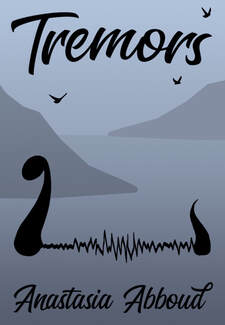 I hope you enjoyed that little peek into the story. The book cover is going to change. I can hardly wait to see it. The title might be expanded to Tremors Through Time. I love it all, and I will keep you posted! |
Romance!It's no secret that I prefer fat HEAs. Where better than in a beautiful romance? Archives
June 2024
Categories
All
NewsletterFrom me to you with a smile. Thank you!You have successfully joined our subscriber list. |

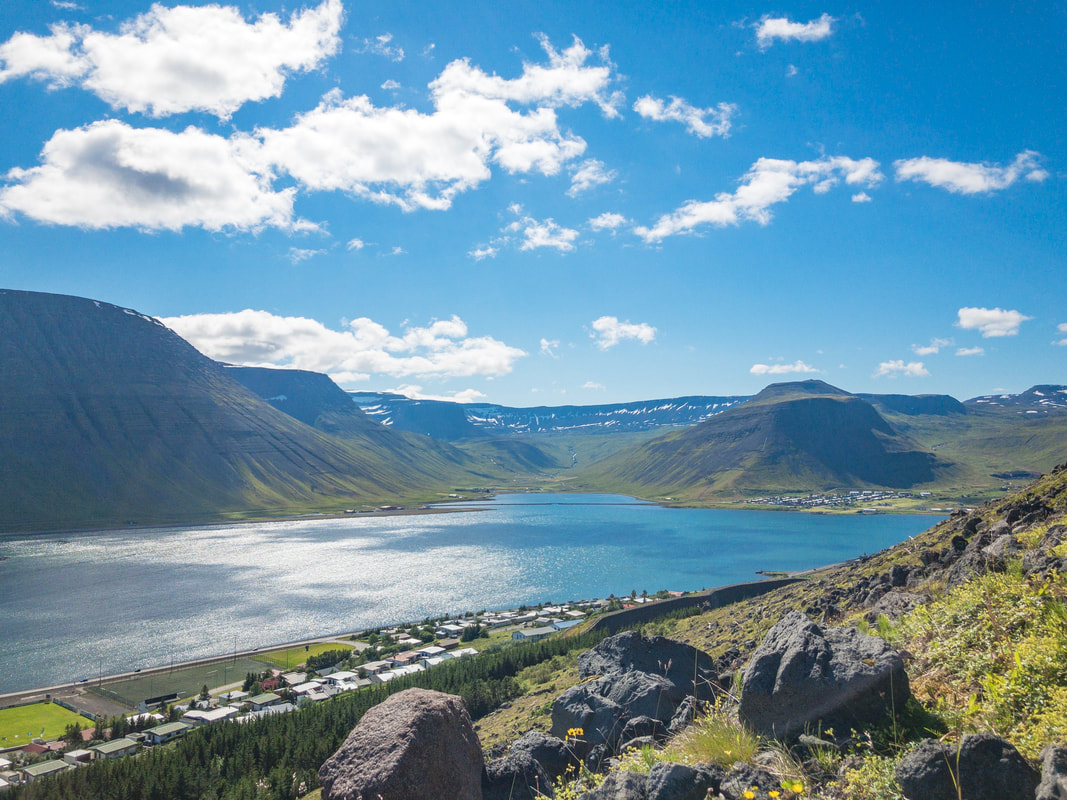
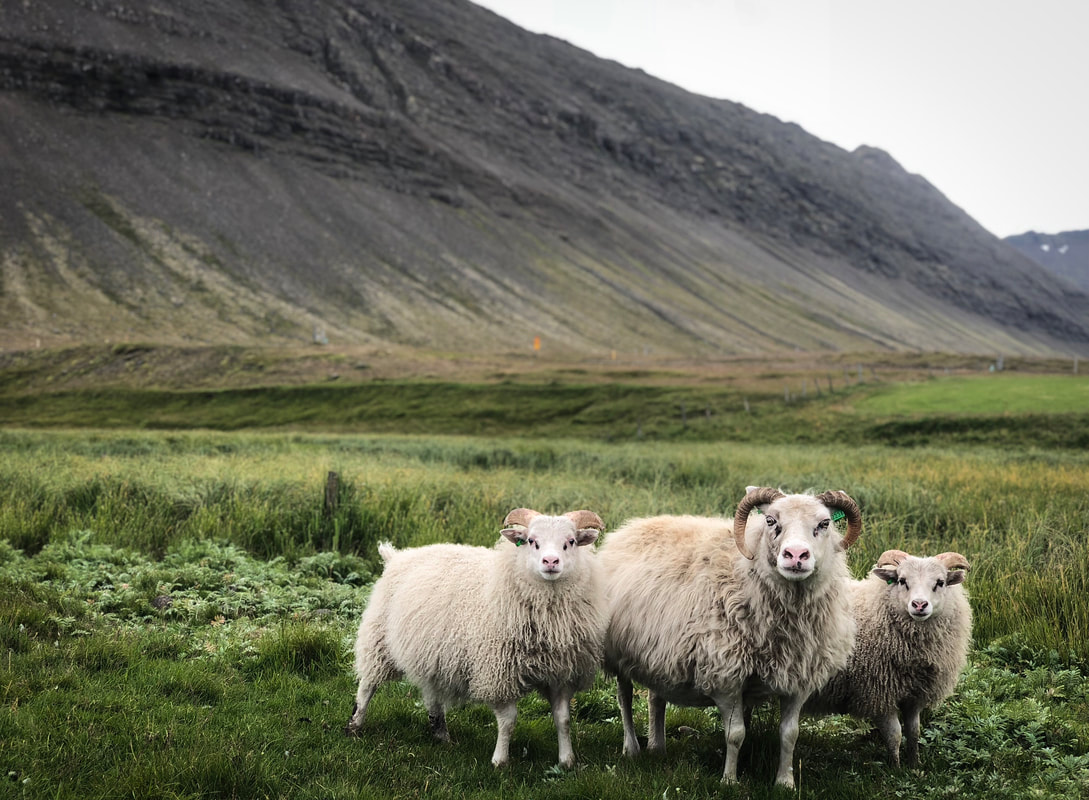
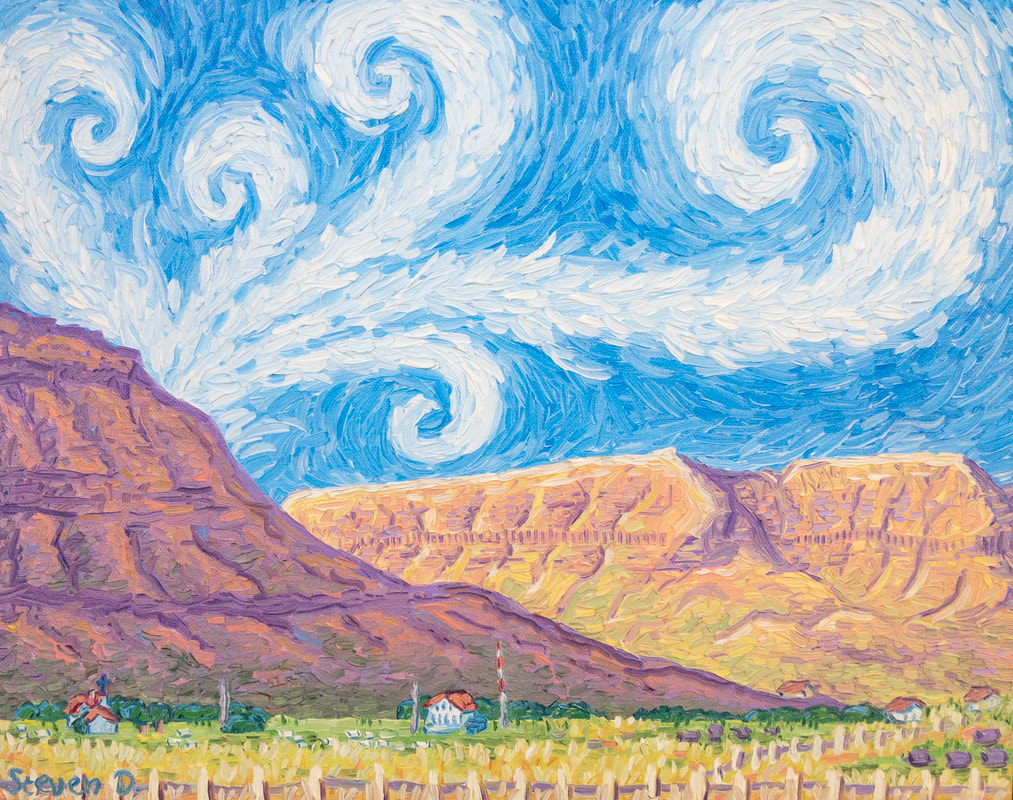
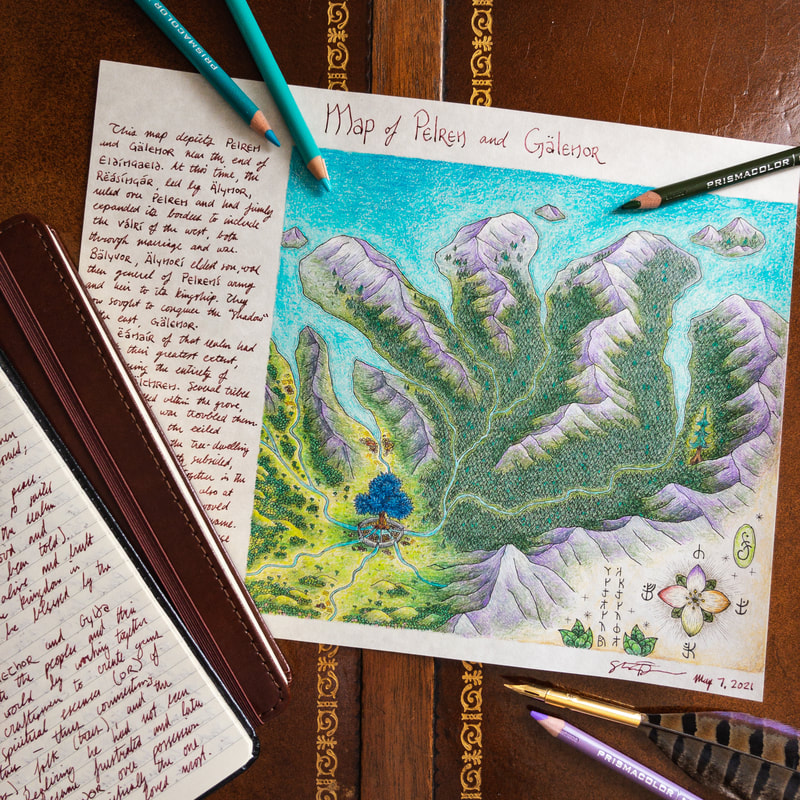
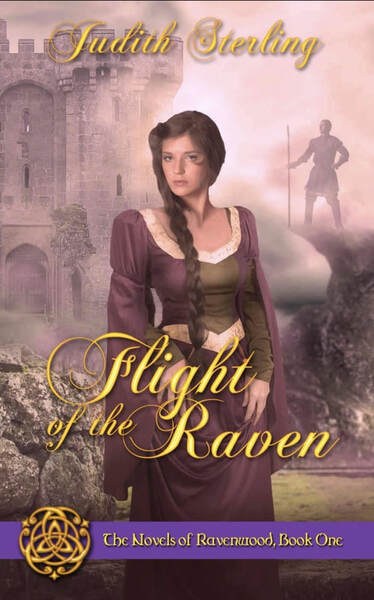
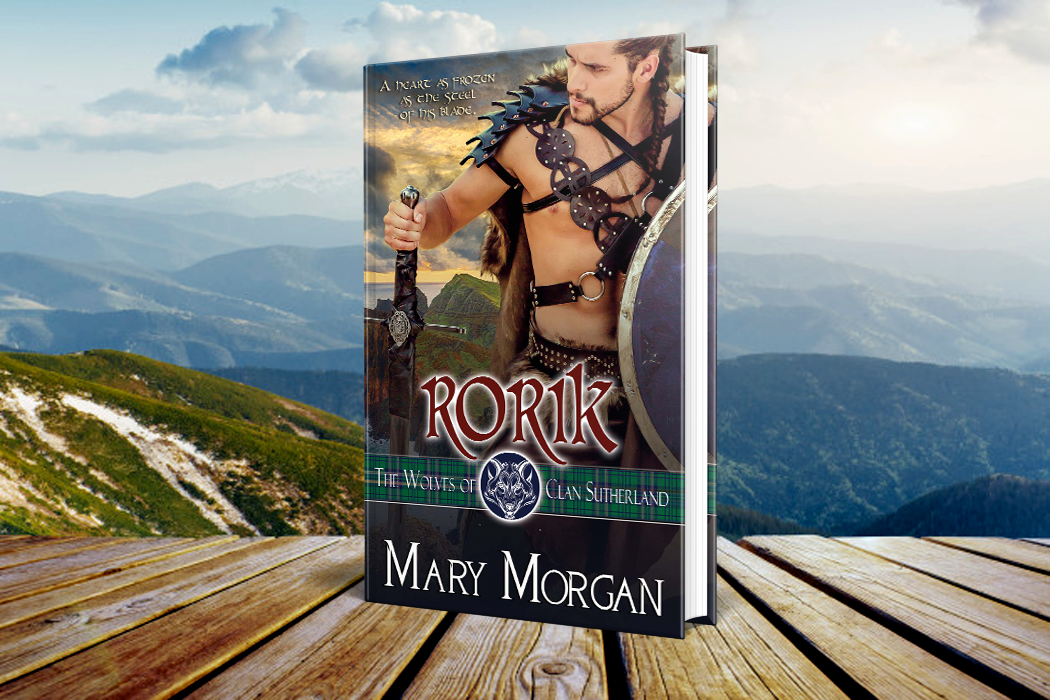

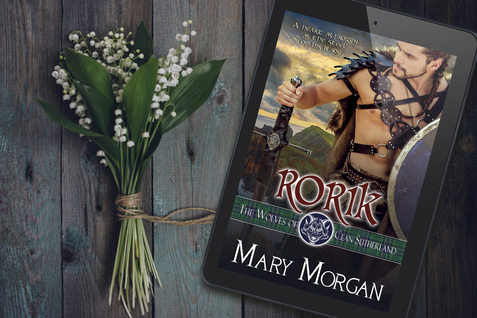



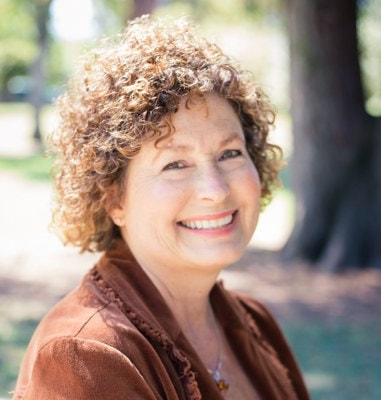

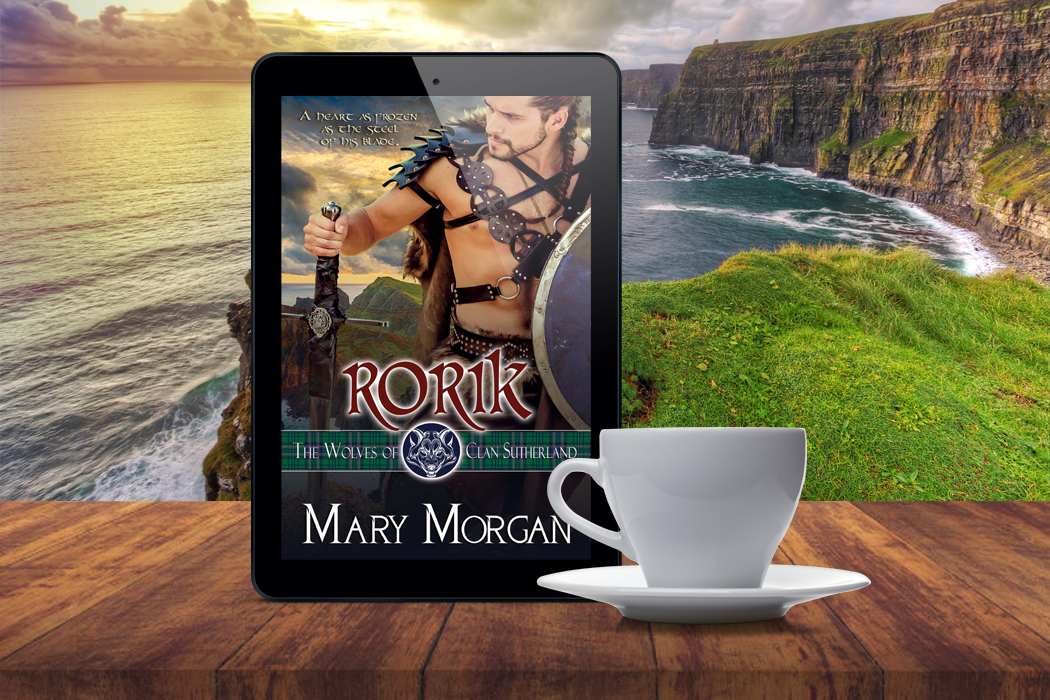

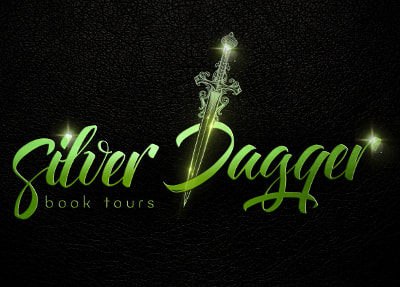
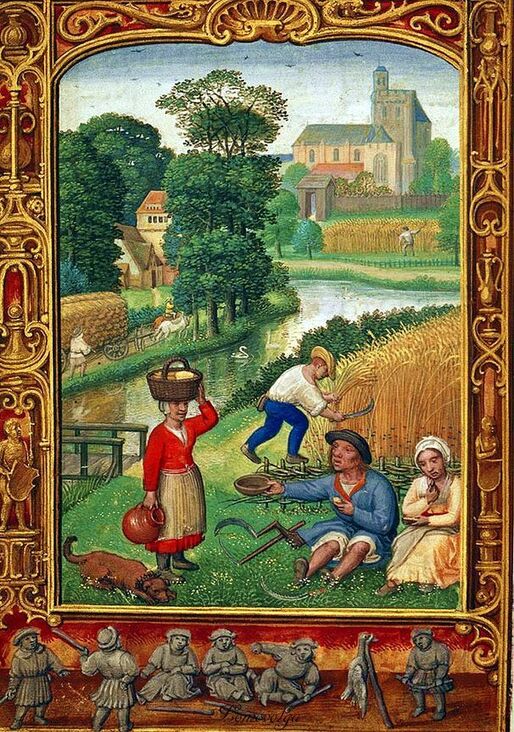
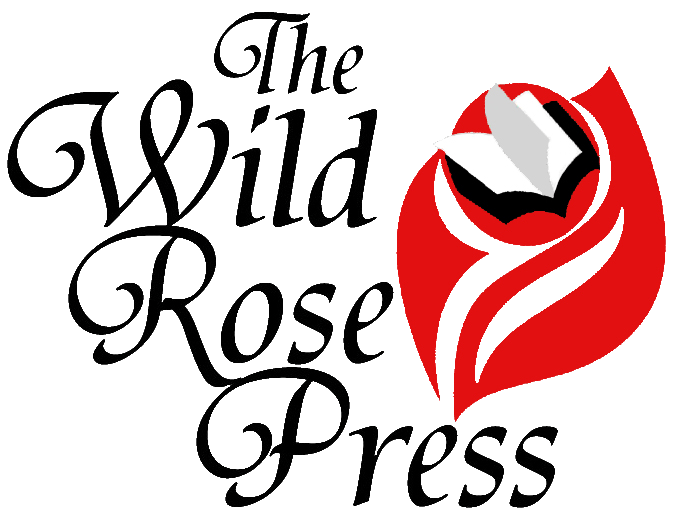
 RSS Feed
RSS Feed